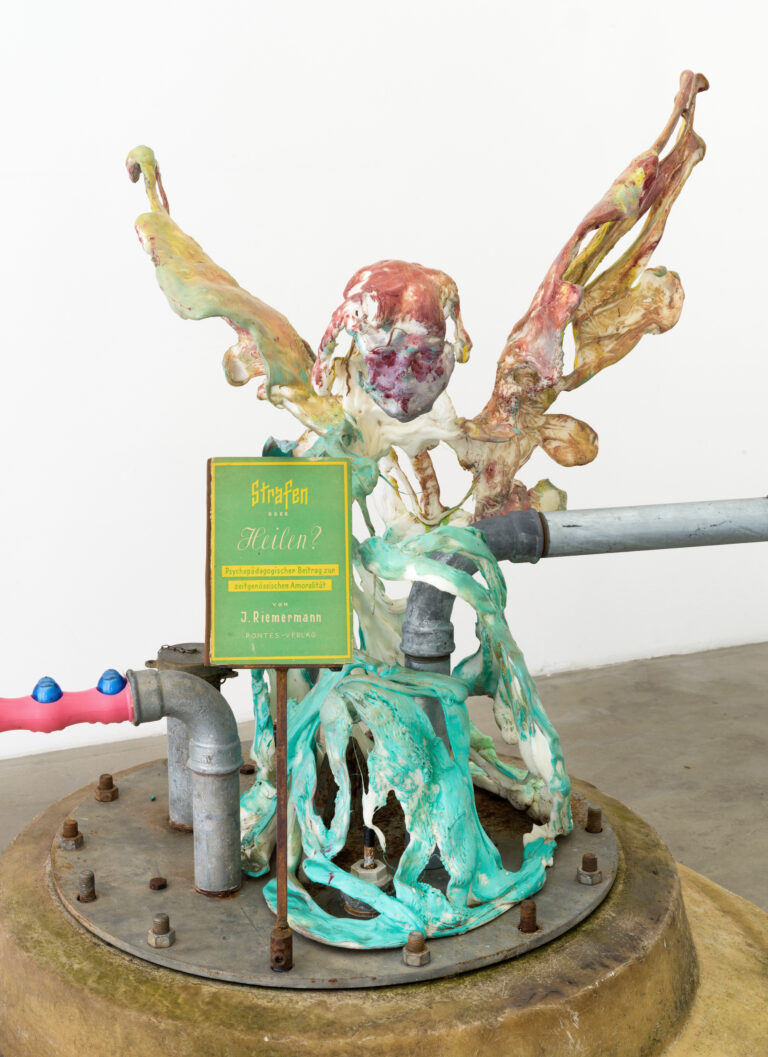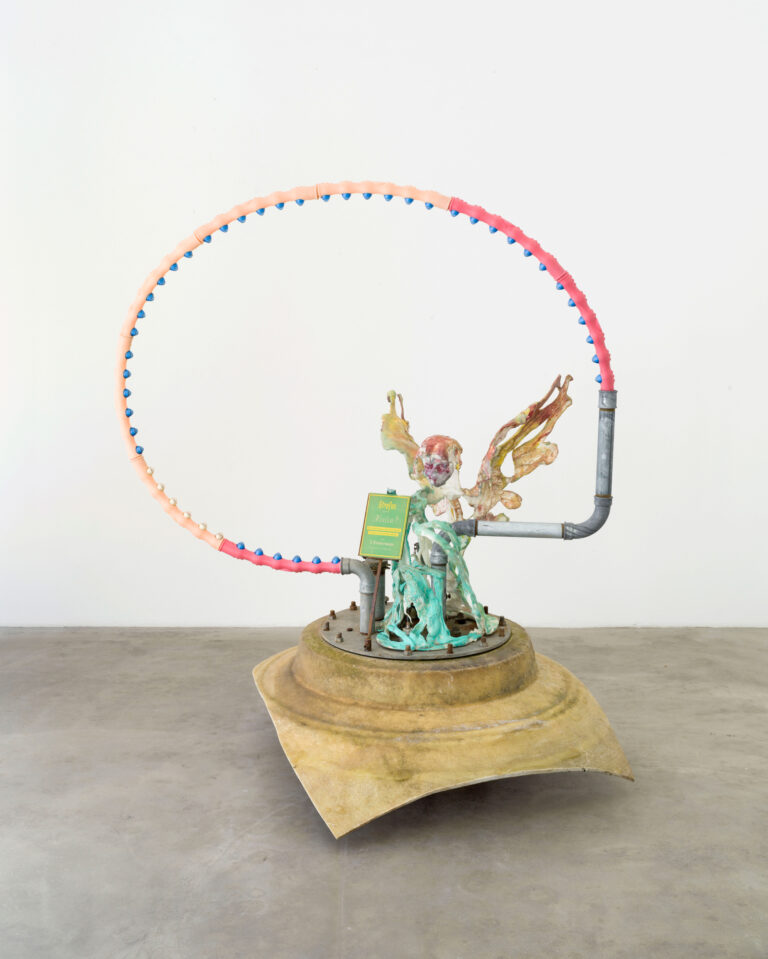Raphaela Vogel
Found Subject
Gallery Openings—15 Sep 2023, 6 to 9 PM

Raphaela Vogel, Strandgut aus dem stürmischen Zeitenmeer (Detail), 2023, Courtesy BQ, Berlin, and the artist, Photo: Roman März, Berlin

Raphaela Vogel, Strandgut aus dem stürmischen Zeitenmeer, 2023, Courtesy BQ, Berlin, and the artist, Photo: Roman März, Berlin
There are barely any traces of Jewish-German writer Erich Hopp (1888-1949). Together with his family, he hid from the Nazis in the same building that the artist inhabits as of recently. It was built in 1930 by architect Richard Iwan – little is known about him and his ambitious projects between Bauhaus and Californian Modernism as well. Floorplans, letters from the architect, a song (Tango), written by Hopp in 1930, cues about his work as a director in a workers theatre of the 1920s, a book of psalms written by him from the underground and his memoir, published in the US in 1947, in which he recounts experiencing hunger and cold in their hiding place. These materials, austere and moving at the same time, form the basis of Raphaela Vogel’s imagination turned installation. The intersection of architectural modernism, German fascism and antisemitism, as well as the transformation of despair into spiritual hope are her points of departure. Raphaela Vogel’s film dissects the house into utopian ornaments. Hopp’s ambivalent psalm resounds while monstrous agricultural machines tie the scene together. Footage from the everyday lives of survivors and dialectical images showing progress collapsing into terror, an inhumane humanism, frame those ‘found subjectivities’ in the adjacent rooms. The artist offers four possible points of access to the destiny of others in geometric terms: centrality/diameter – being affected, victim, fighter, refugee, in hiding / secant – people in solidarity, who take risks for the sake of others / tangent – those who are empathetically touched and remain in their world / passant – no connection
RAPHAELA VOGEL (b. 1988 in Nuremberg, Germany) studied at the Akademie der Bildenden Kuenste Nuremberg, at Staedelschule in Frankfurt a.M., and De Ateliers, Amsterdam (NL). In addition to scholarships from Guenter-Peill-Foundation Dueren or Studienstiftung des Deutschen Volkes Bonn, she received awards such as the Columbus Award for Contemporary Art 2015, the Stylepark Award of Staedelschule Frankfurt a. M. in 2014 and has been nominated for the 47th Art Prize of Boettcherstraße Bremen.
Her artistic practice opens up an enigmatic world within a variety of themes, materials and techniques. Her repertoire ranges from paintings on animal hides to expansive spatial installations and video sculptures, consisting of roaring sounds, vocals and oversized objects that create entirely unexpected compositions of meaning in multilayered spaces of experience. Evading categorization, her works are designed in a way, that everything occurs equally – the self-made, the found, the composed, the references from different socio-historical or cultural backgrounds as well as fictional narratives and created images.
Raphaela Vogel’s works have been exhibited at De Pont Museum Tilburg (NL), Haus der Kunst Munich, at Kunsthaus Bregenz (CH), Berlinische Galerie, Berlin, Kunsthalle Basel (CH), the Nam June Paik Art Center, Gyeonggi-Do (KR), as well as the Fondation Vincent van Gogh Arles (F), at Fondation Cartier, Paris (F) and at Neues Museum Nuremberg, or Schinkel Pavillon, Berlin among others. Raphaela Vogel lives and works in Berlin.
